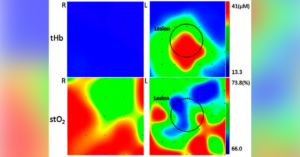Scoop of Practice Episode 2: Toils From the Wound Wizard: Things I Wish I Knew When I Got Started

Wound medicine is a vital, youthful, evolving— yet highly underserved —medical specialty practiced by passionate, experienced providers. The credentialing pathway is long, arduous, and ambiguous. Many times this pathway is not recognized by payers, credentialing committees, or medical boards nationally and on a local level.
Many organizations and individuals “hang a shingle” to practice wound management but are not adjudicated by an accepted credentialing authority (ie, American Board of Wound Management, American Board of Wound Medicine and Surgery). This places those organizations and individuals at risk for reimbursement denial from payers, denials from malpractice underwriters who certify insurability, and (unnecessary) litigation claims from patients. In this regard, these well-intentioned providers practice under a delegated authority, which is a huge financial, regulatory, quality, and safety risk to patients and the system at large. Pathways to credentialing for non-nursing clinicians need re-evaluation and redesign so individuals committed to the craft of wound healing can start healing wounds right out of their professional programs.
The path to certification in its current state is mostly experiential; allied health professionals, nurses, and clinicians alike can become certified in wound medicine. Additional qualification certificate exams require 2–3 years’ experience of focused work (ie, up to 3,000 clinical hours), a core degree (ie, DPT, LPN, RN, MSN, DNP, APNP, DO, MD, DPM), and letters of recommendation from other certified wound specialists.
Are there programs integrated with these degree plans that give the professional the ability to become certified upon graduation? I was not aware of any until I completed 7 years of general surgery residency, only to find out that I had to have matriculated in emergency medicine, family practice, PM&R or preventive medicine to get accepted into a wound medicine fellowship. If I wanted a fellowship in undersea and hyperbaric medicine, I had to matriculate in preventive medicine or have been in the military. Technical trade programs exist in undersea and hyperbaric medicine with a clear point of entry and path but why do the clinical practice programs have such a circuitous course? The offerings within the industry for education and credentialing are plenty, are not that different in scope, and all compete on content offering, accessibility, and price.
With the wound management workforce gaps in this country, and with access to care issues due to the pandemic, it would make sense that our industry architects and activists seek to consolidate and accelerate the current certification pathways at every professional scope, and advocate for acceptance at the payer, legal, and point of care levels. The job market for certified wound specialists is diverse and wide open but entry is difficult and once in the industry there is a fierce and territorial environment.
Wound management services is a boutique specialty with specialized coding and billing requirements. If wound management is to be considered a medical specialty rendered by skilled professionals and paraprofessionals that practice in parallel with primary care providers with a high likelihood of seeing a patient on the same day of service, coders and billing specialists need to know how to use coding modifiers attached to AMA CPT Category I/III codes, so credit and reimbursement are tendered. These revenue cycle professionals also need to understand billing and coding (eg, AMA CPT Category II codes) for durable medical equipment and devices we use in our practice like compression garments and cellular-and tissue-based products.
As stewards of our own revenue cycle management, it is imperative to attend educational sessions tailored to clinicians that teach about appropriate documentation, compliance, and regulatory guidance. These programs should be required by accrediting bodies when wound management professionals are matriculating through credentialing pathways. Certification exams should cover scenarios on coding and billing, waste, fraud and abuse, including Sunshine, HIPAA and False Claims Acts.
Traci A. Kimball, MD, CWSP – Traci A. Kimball is a Certified Wound Specialist Physician and Principal Managing Partner, WISH Expert Consulting LLP




